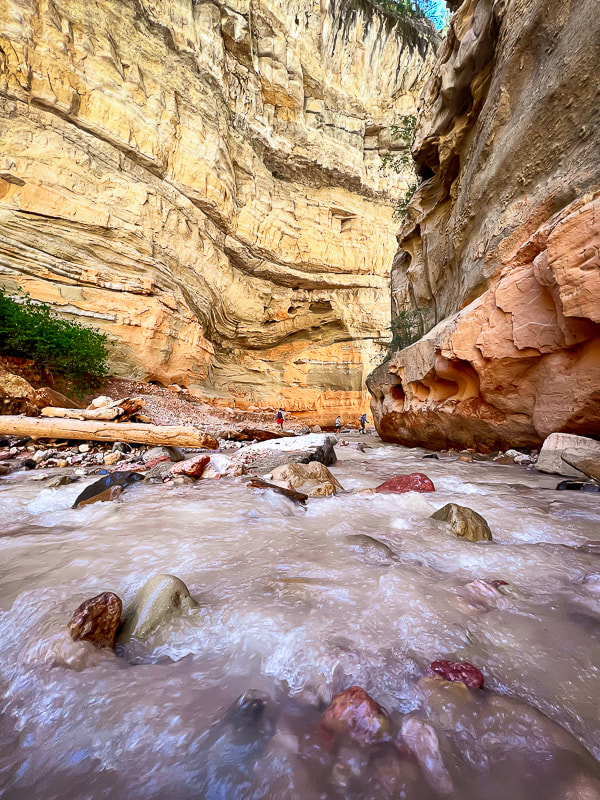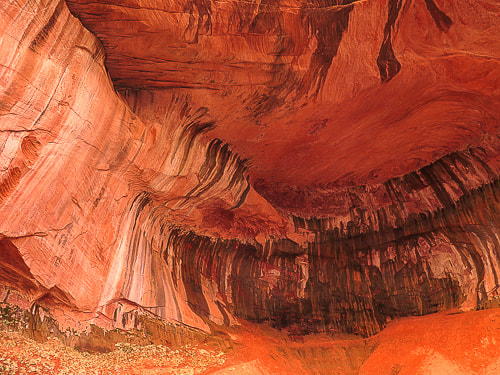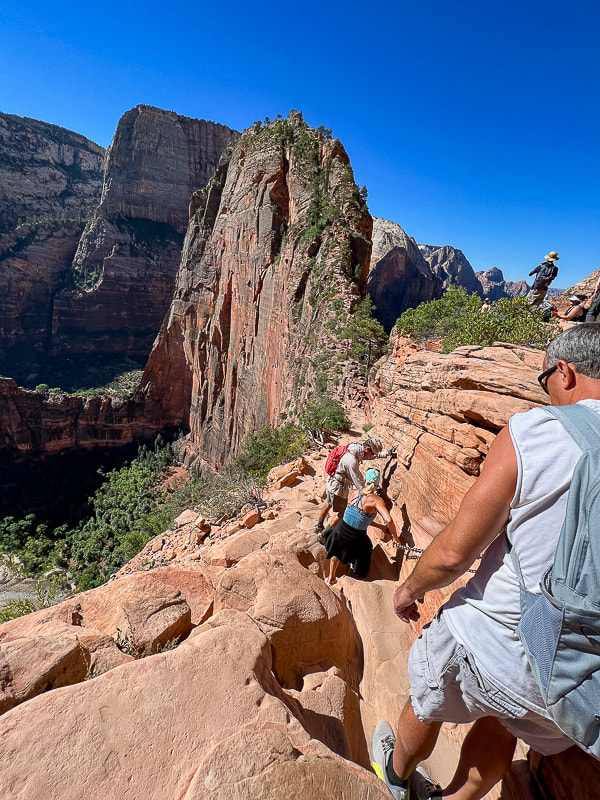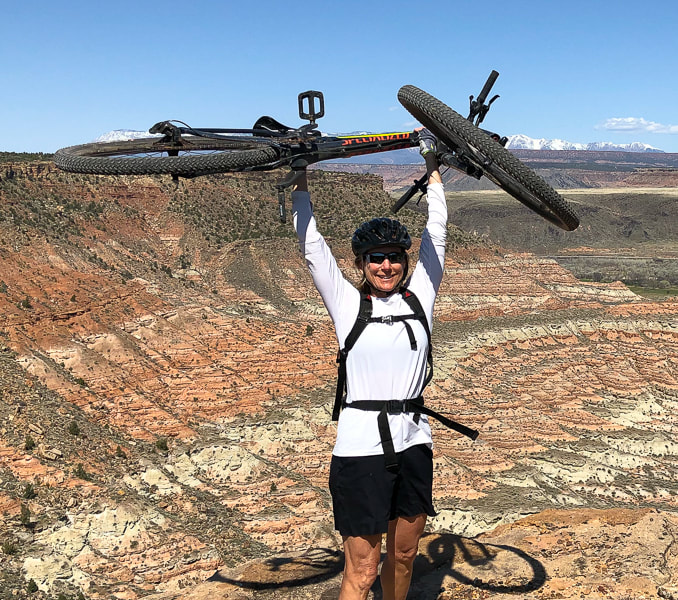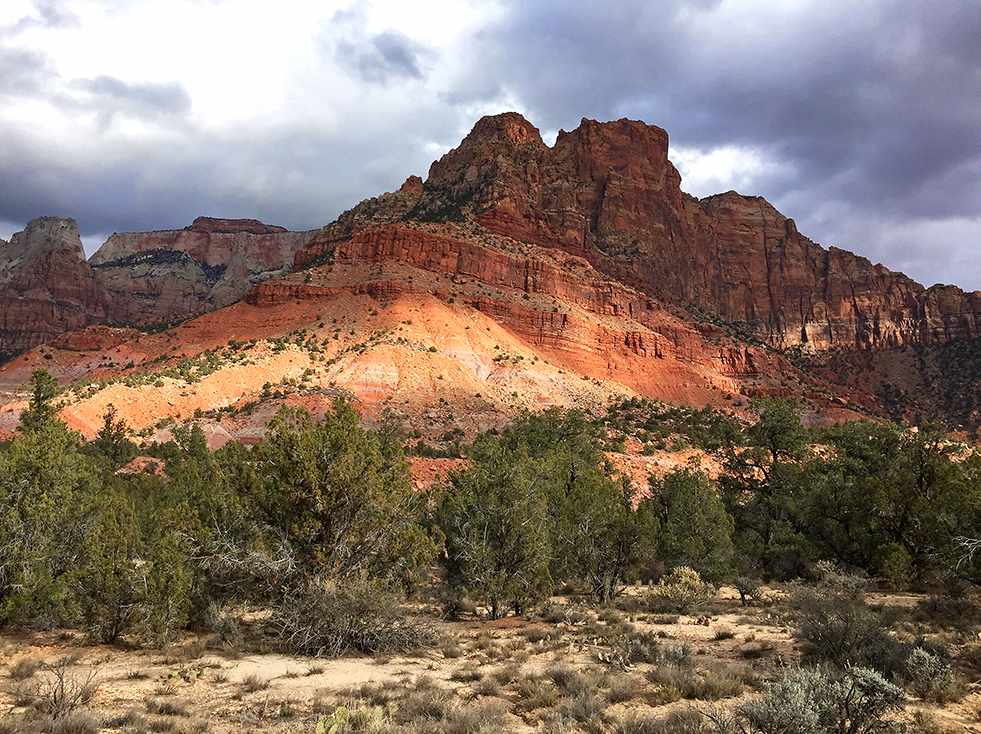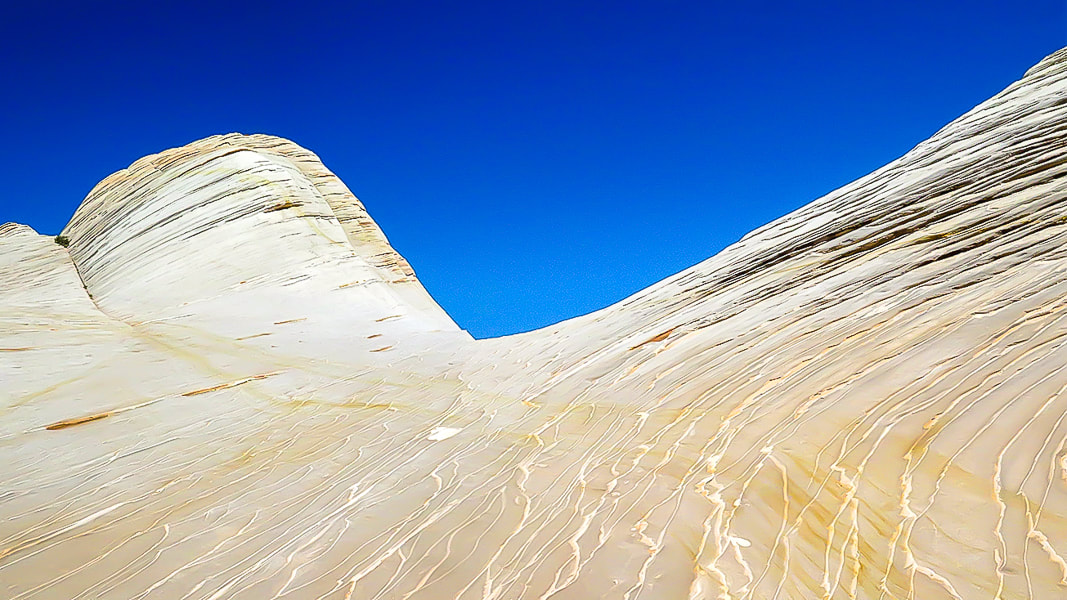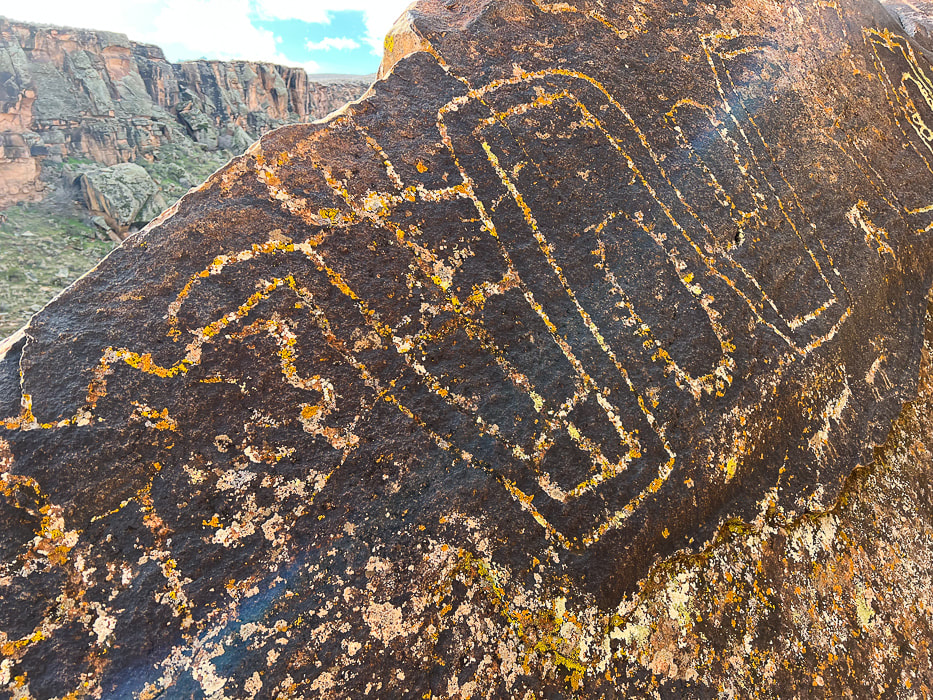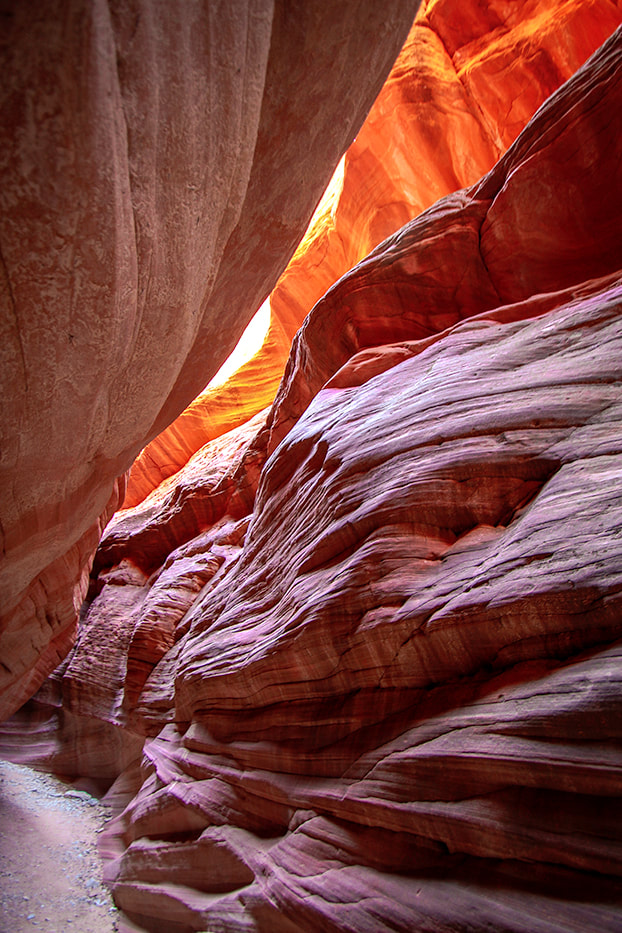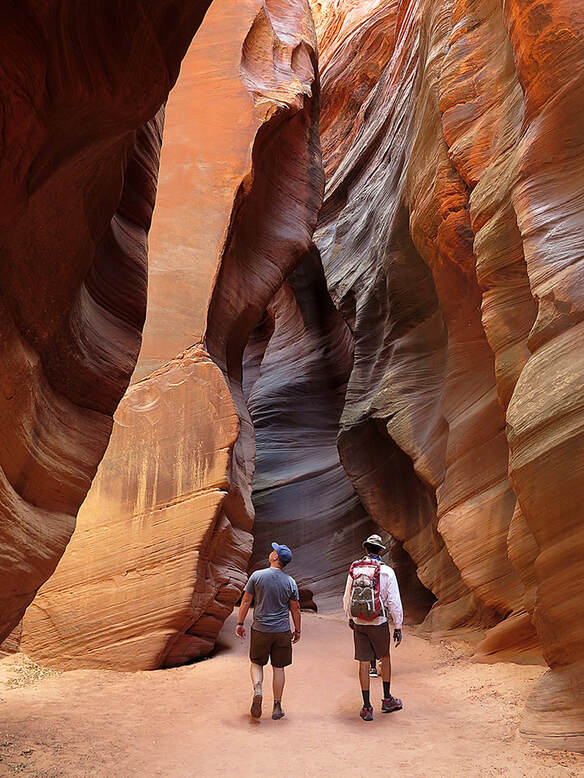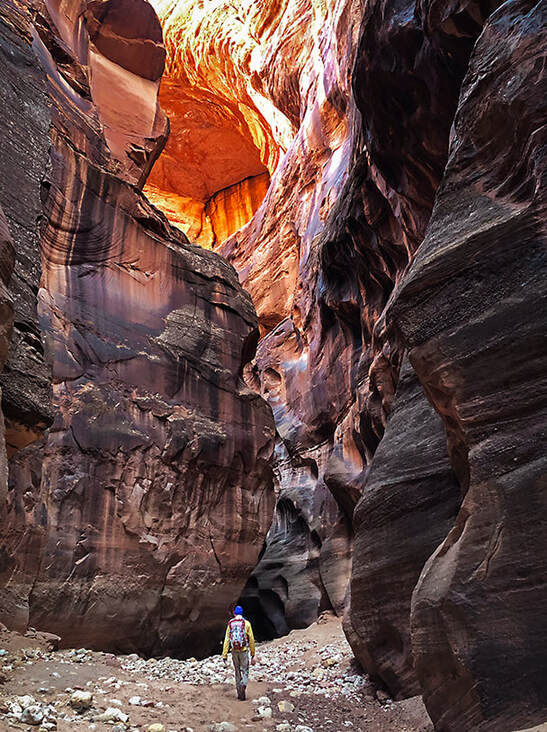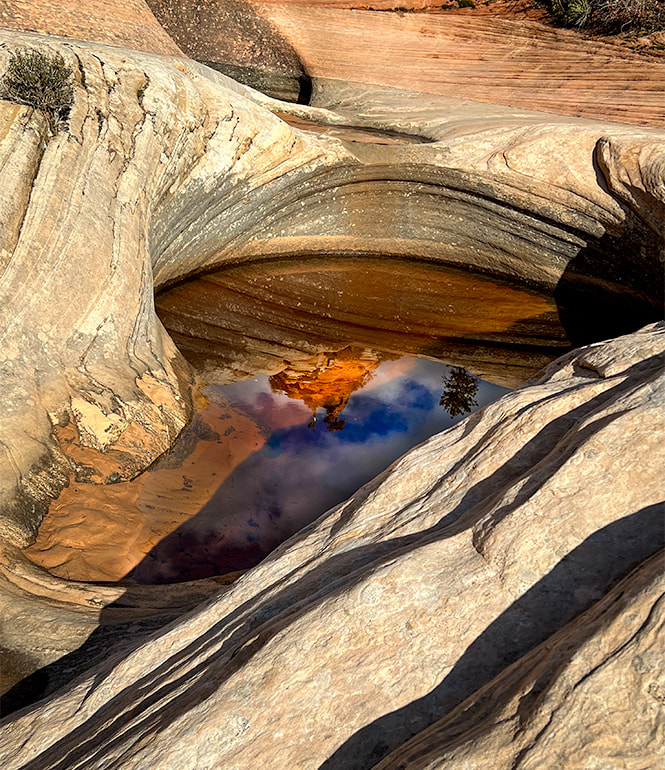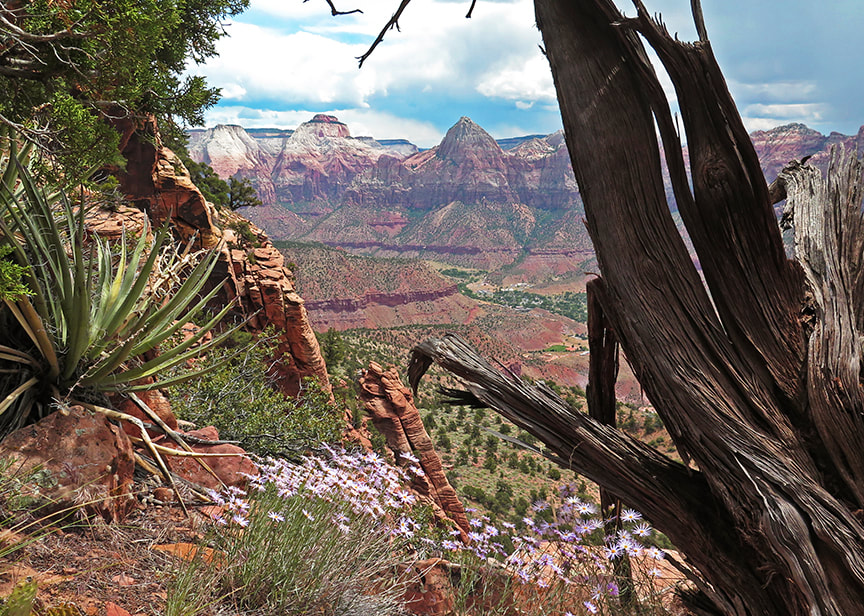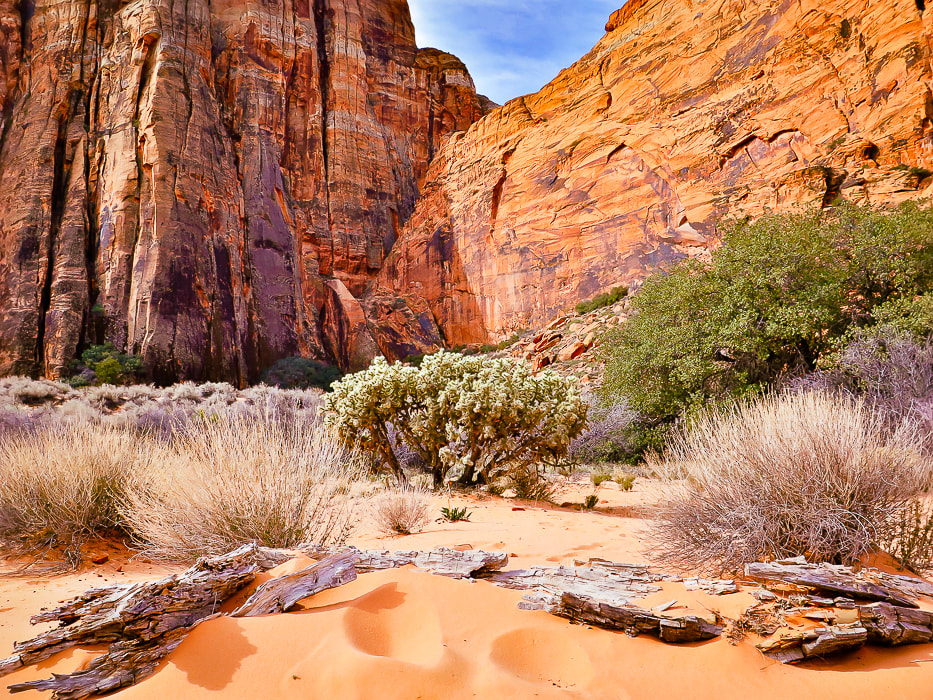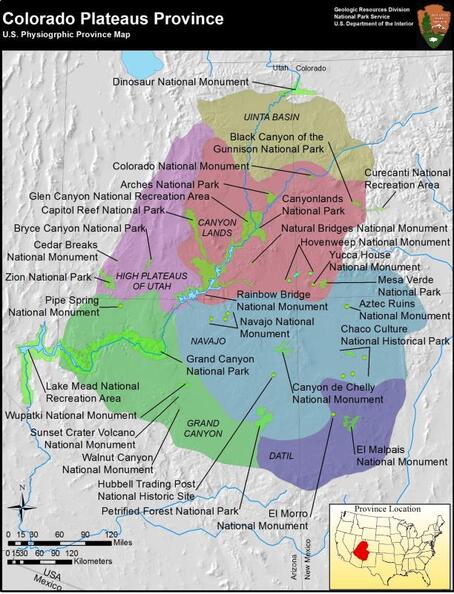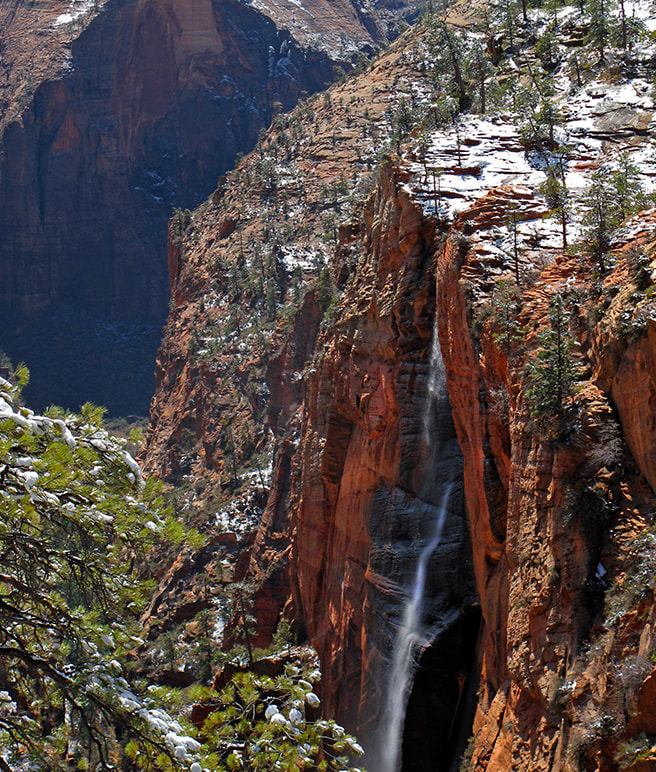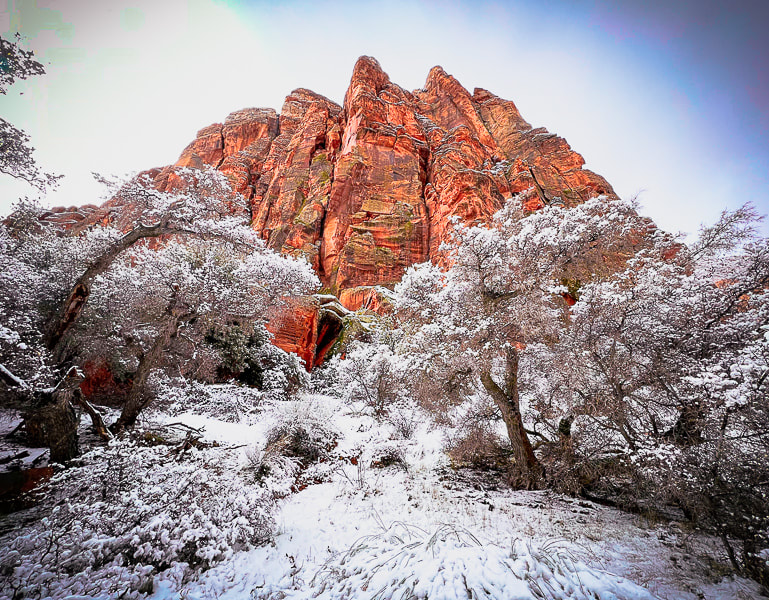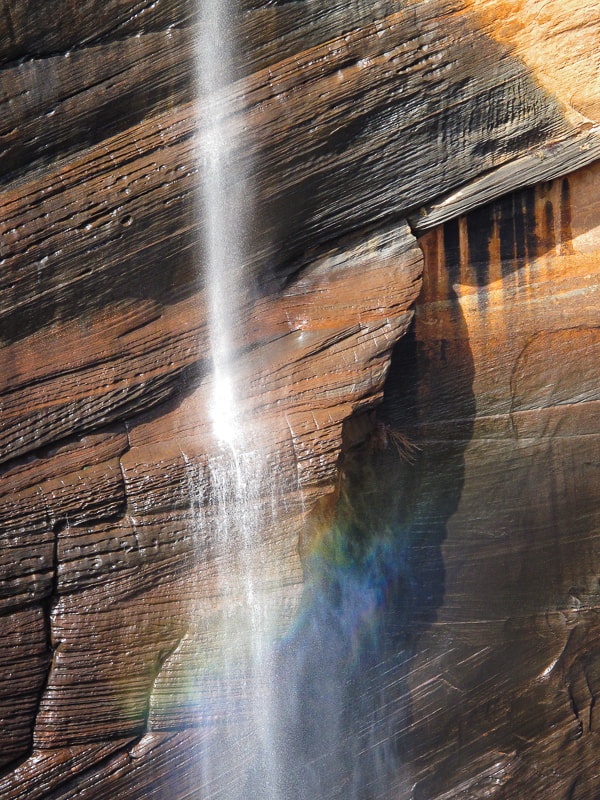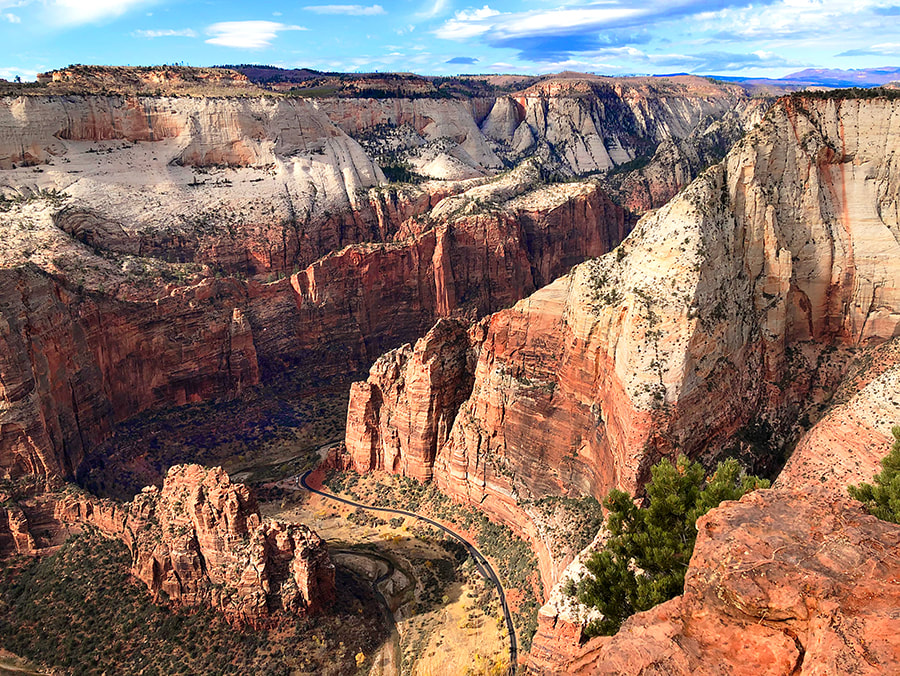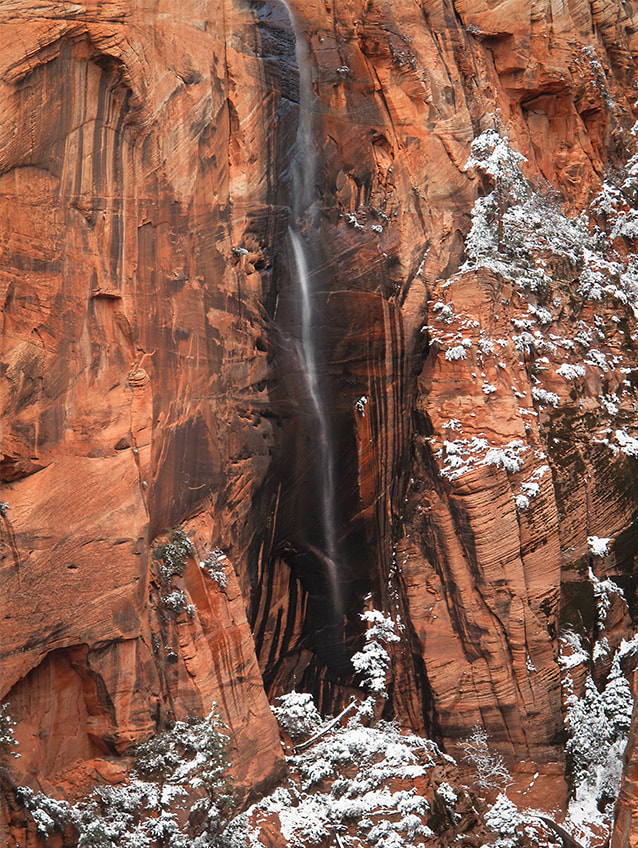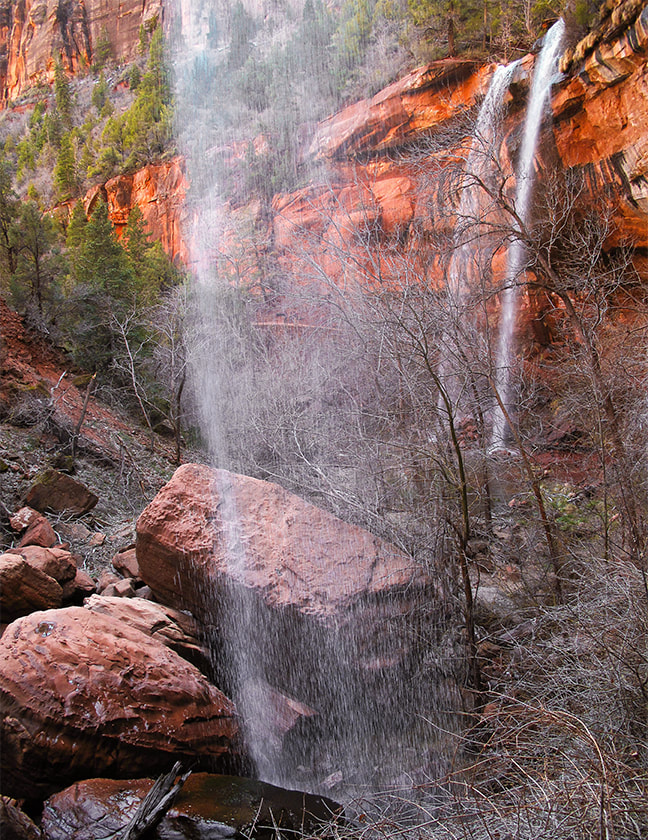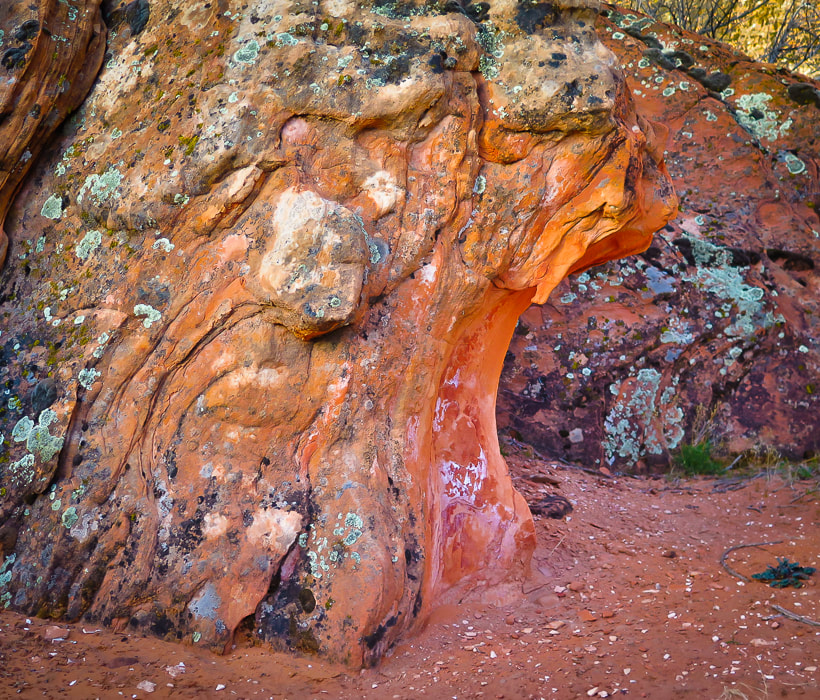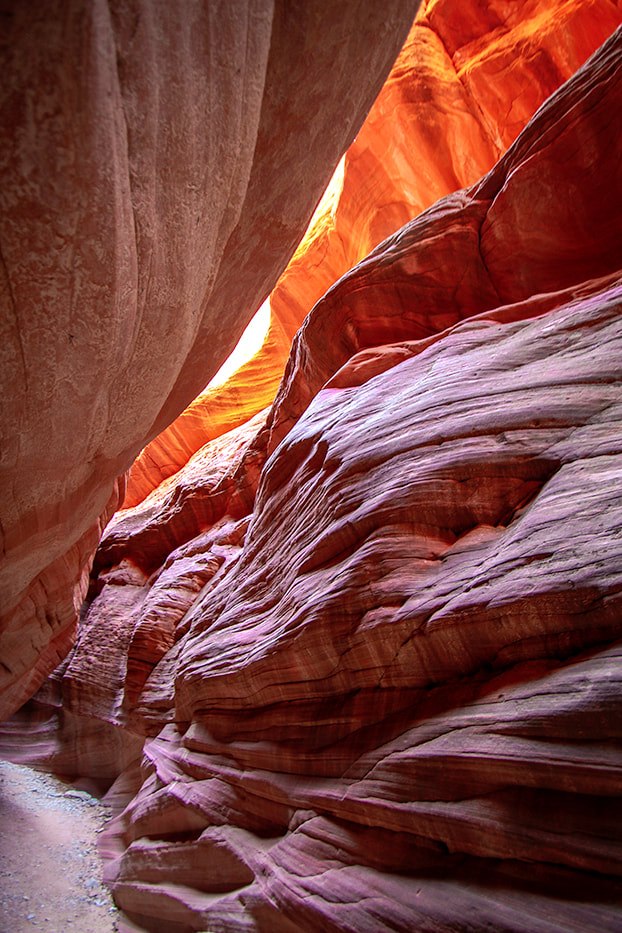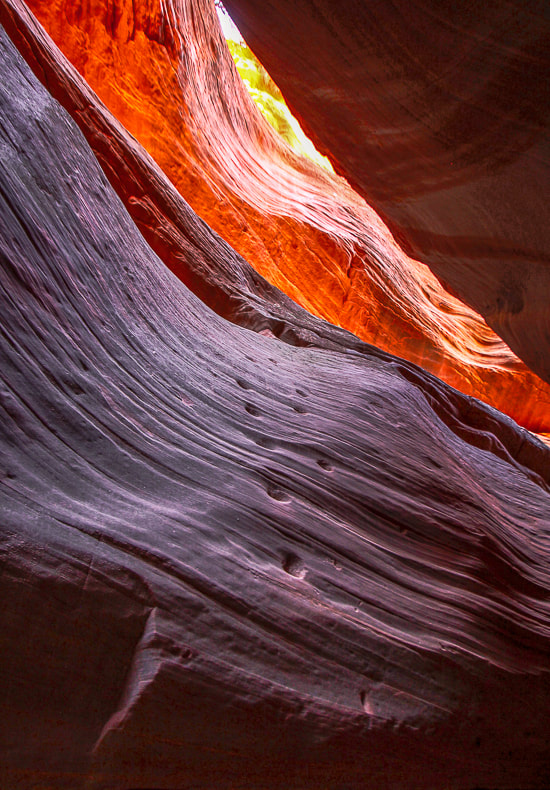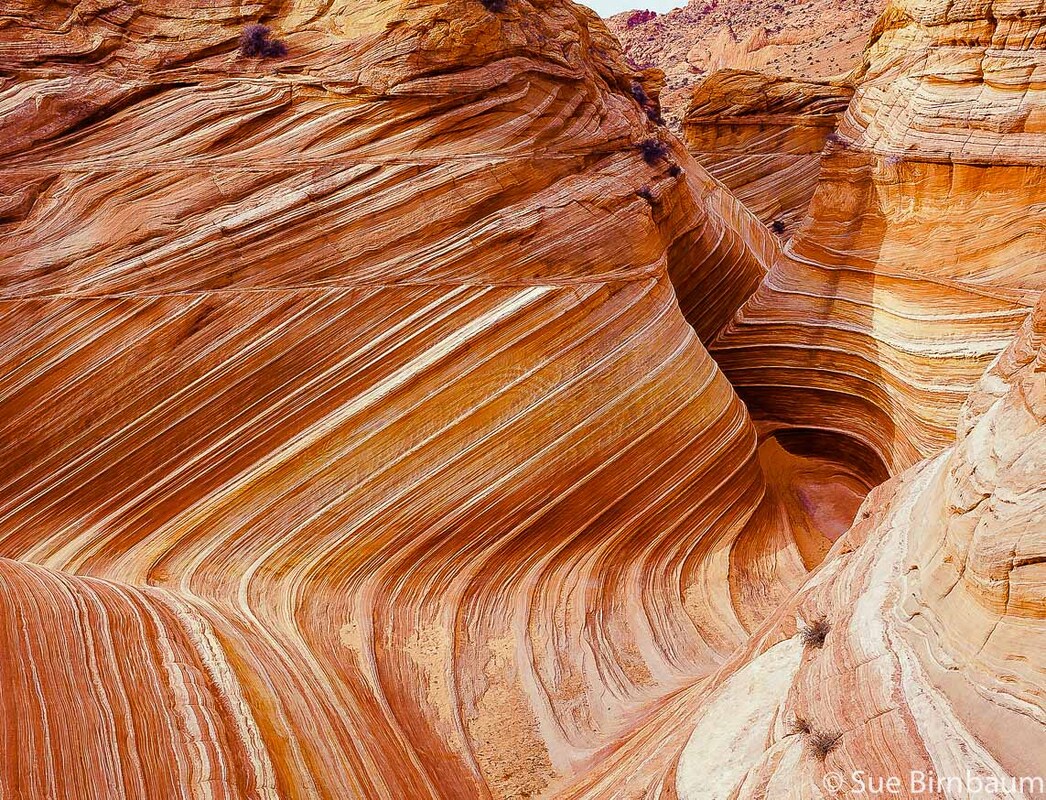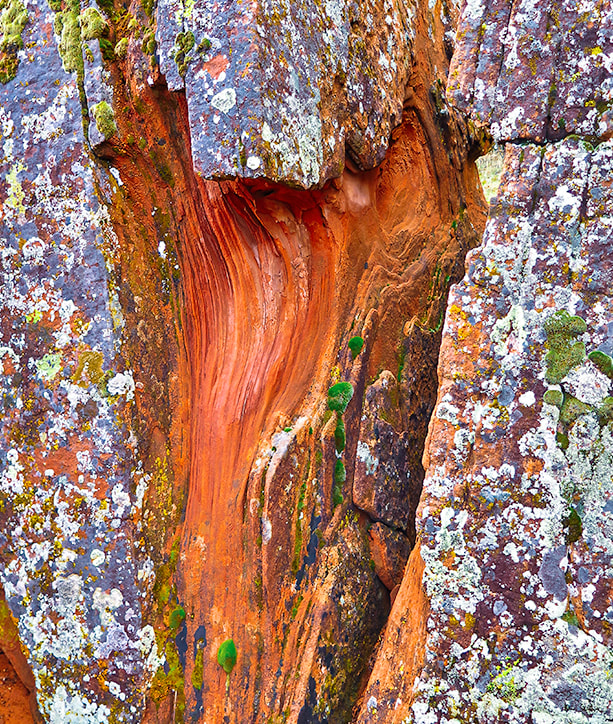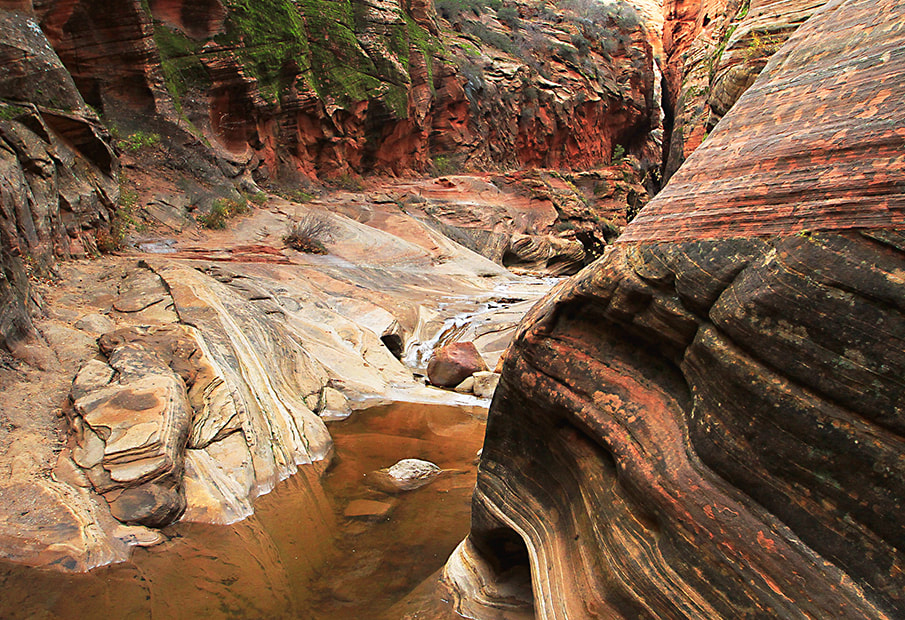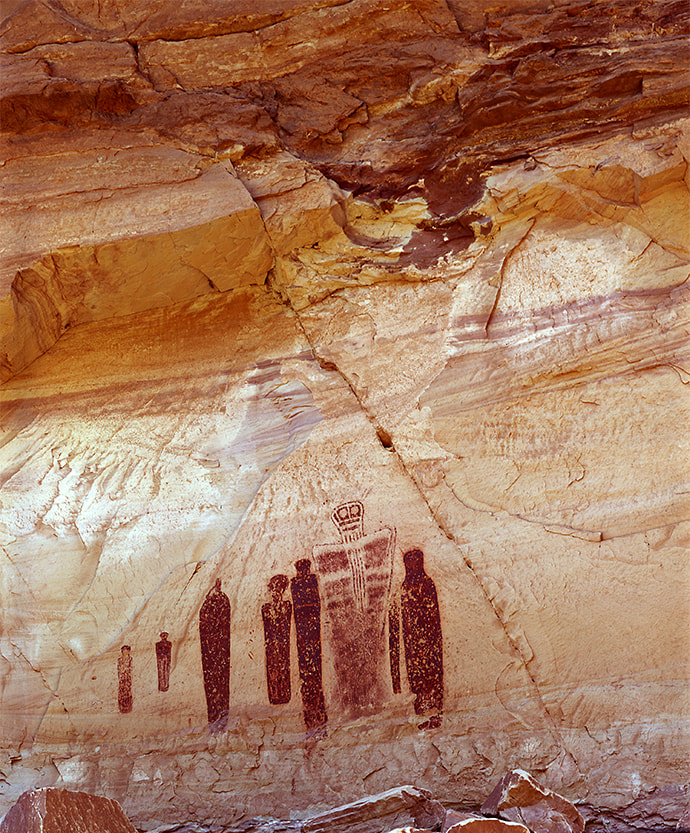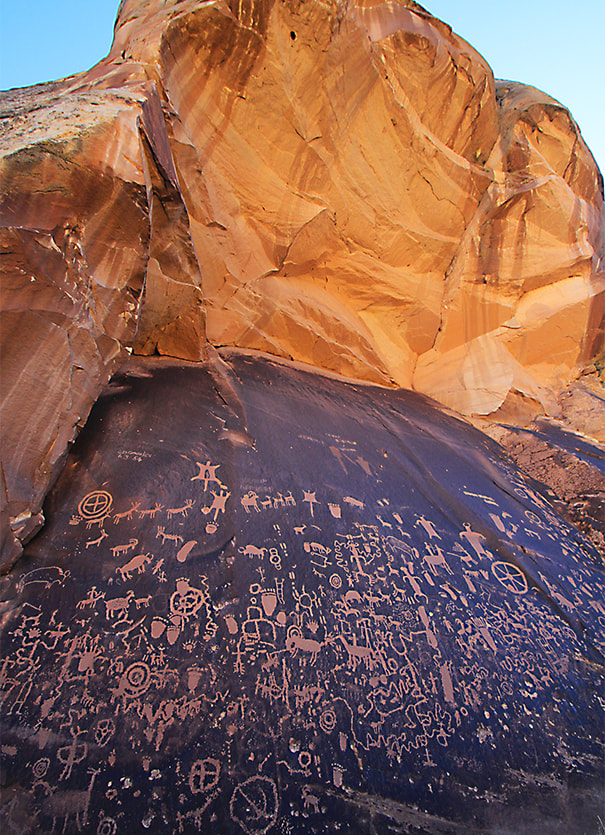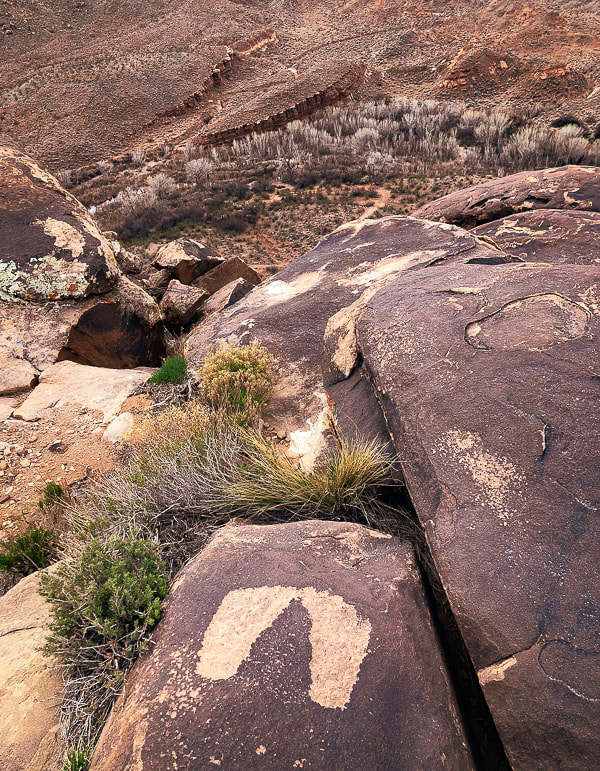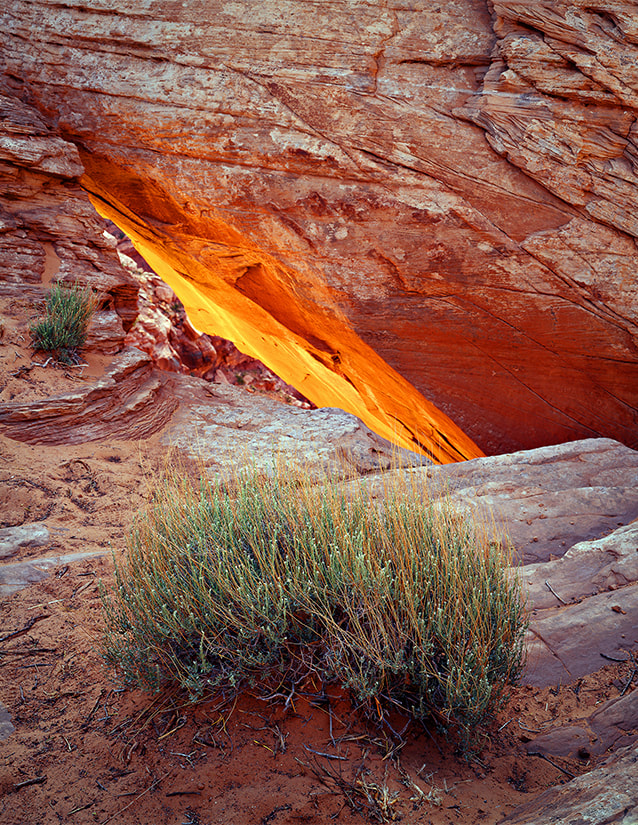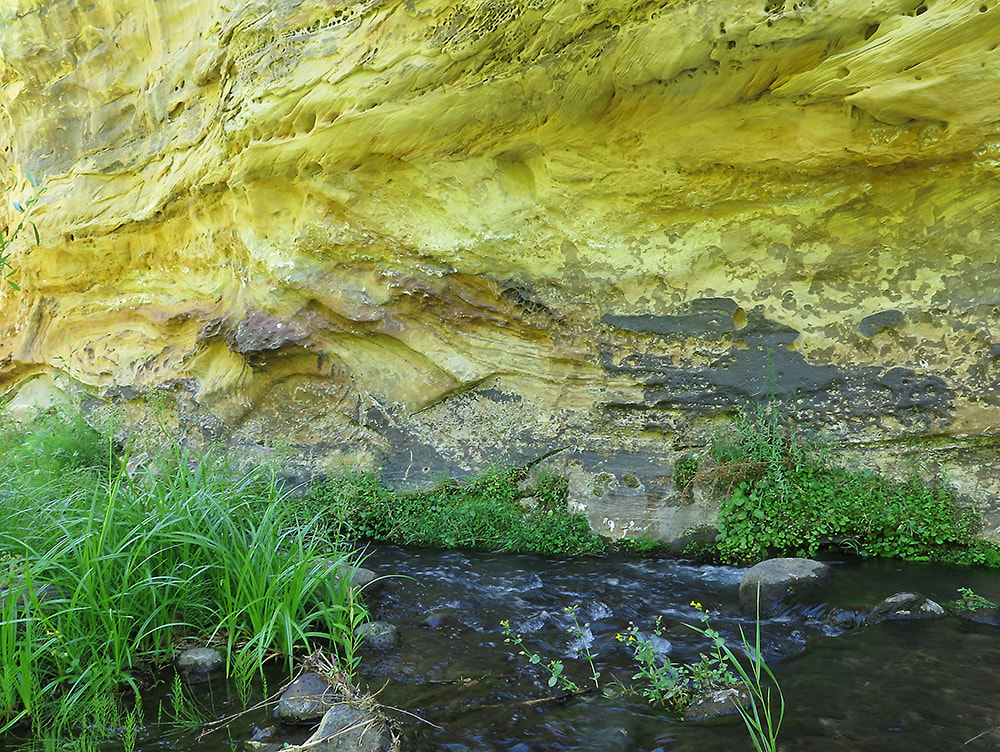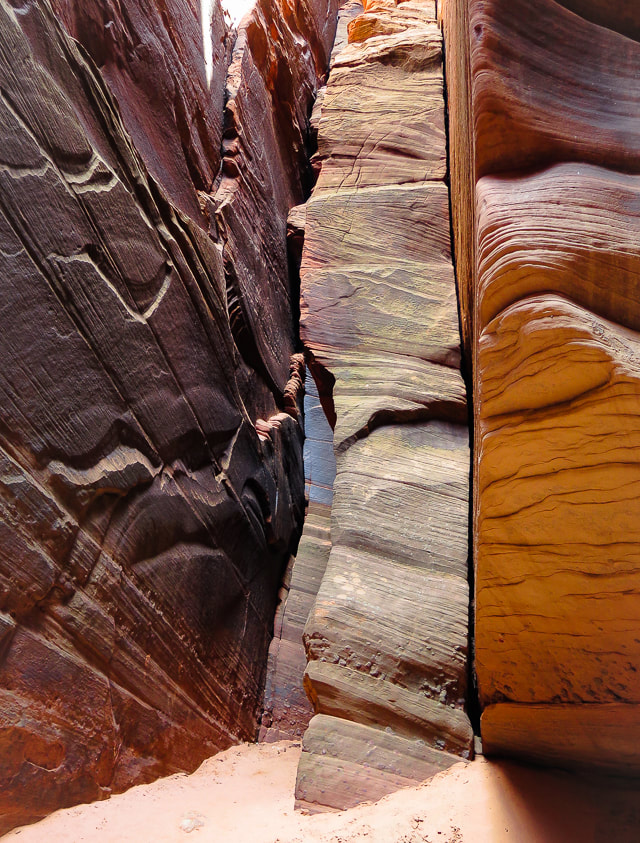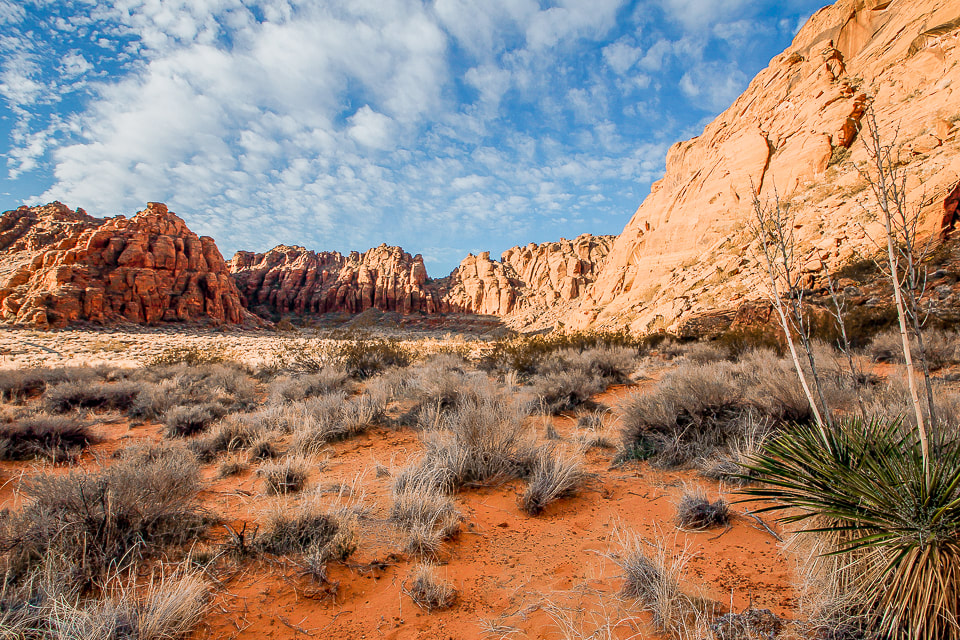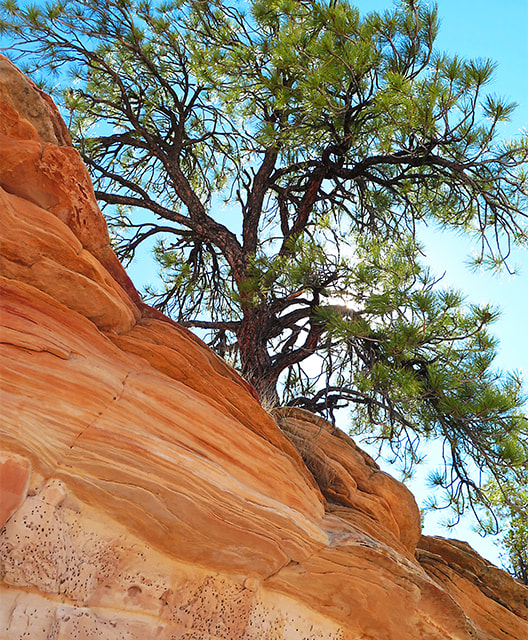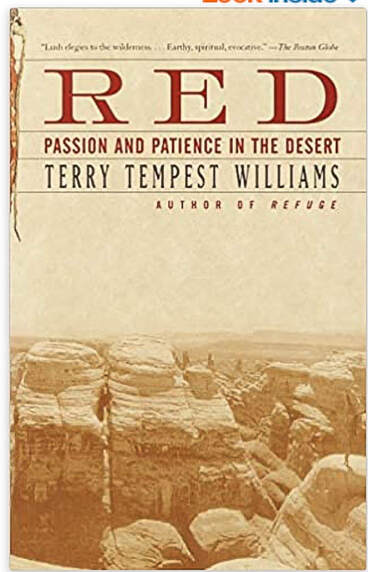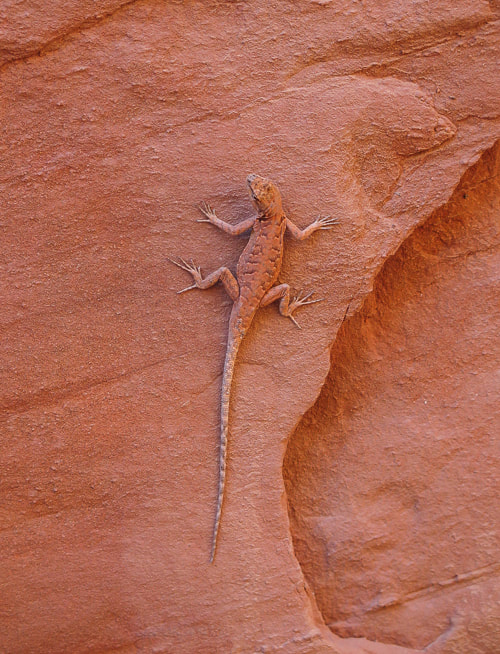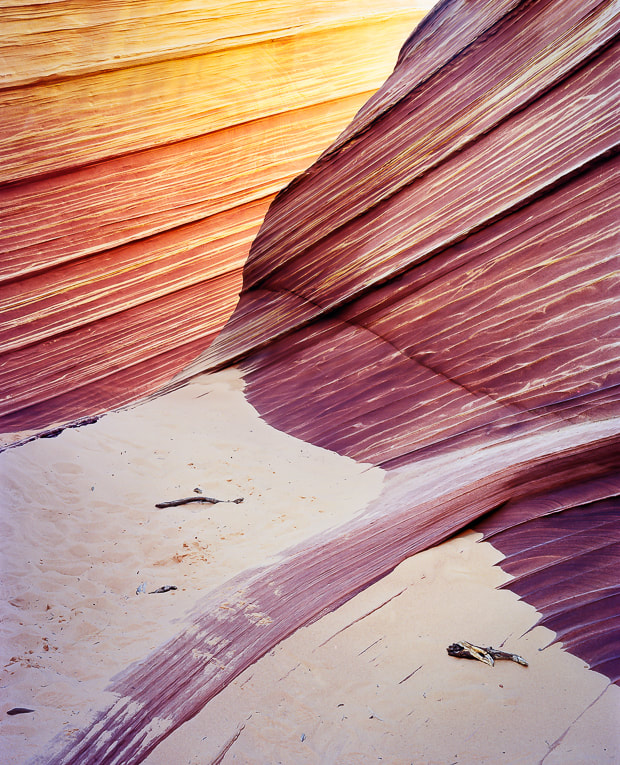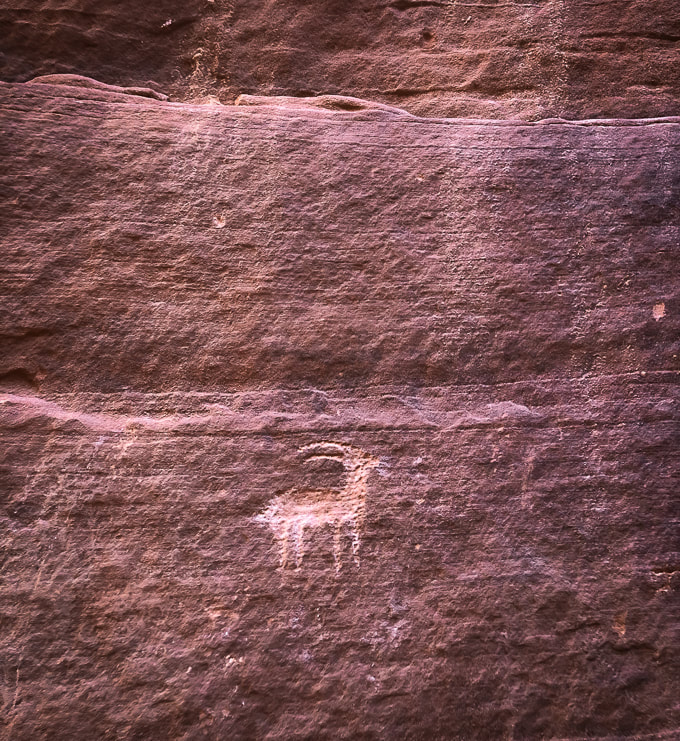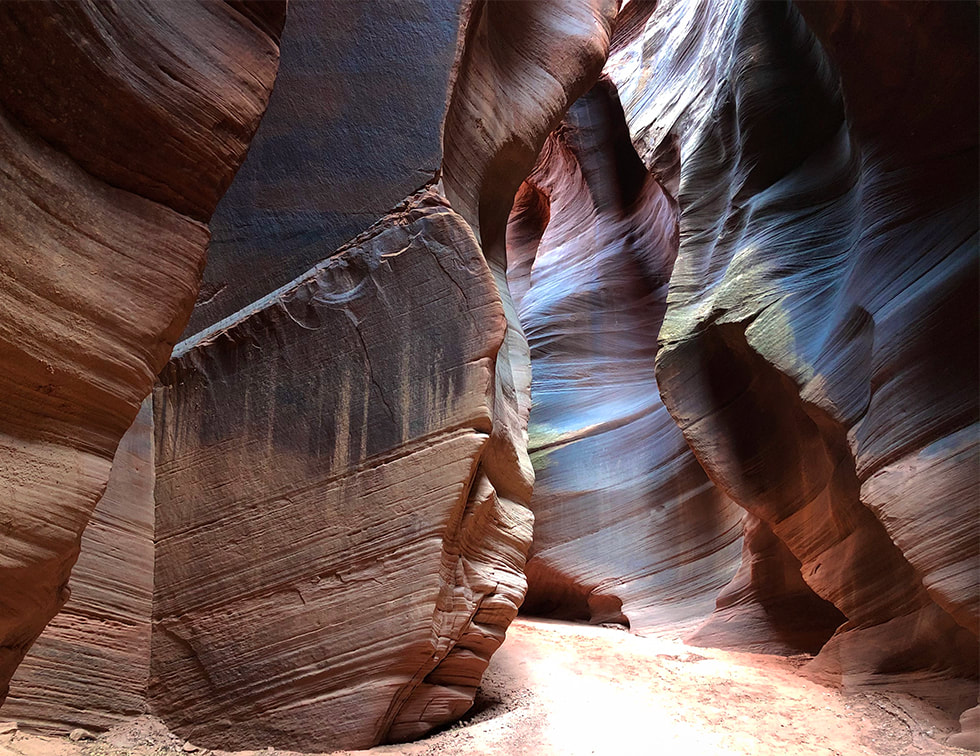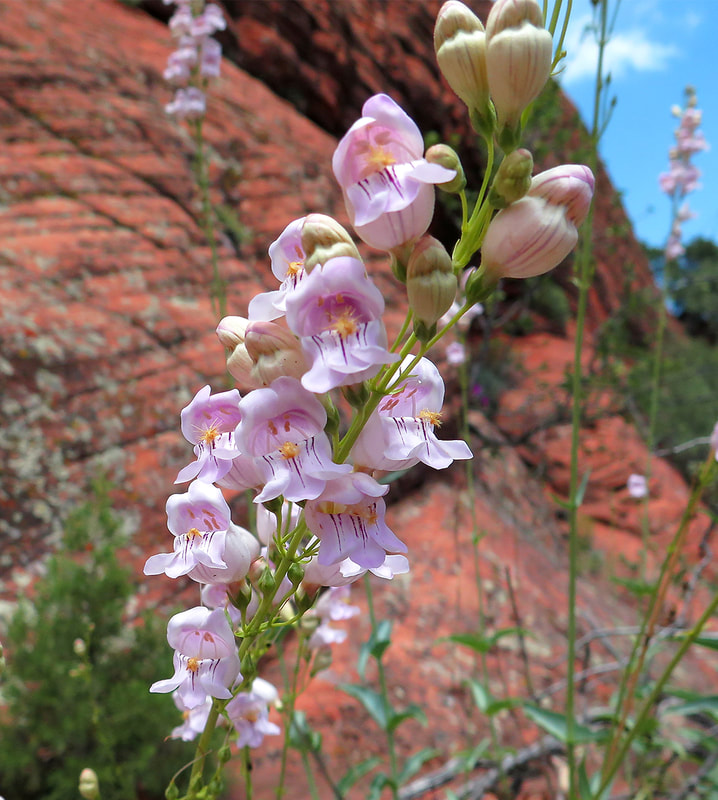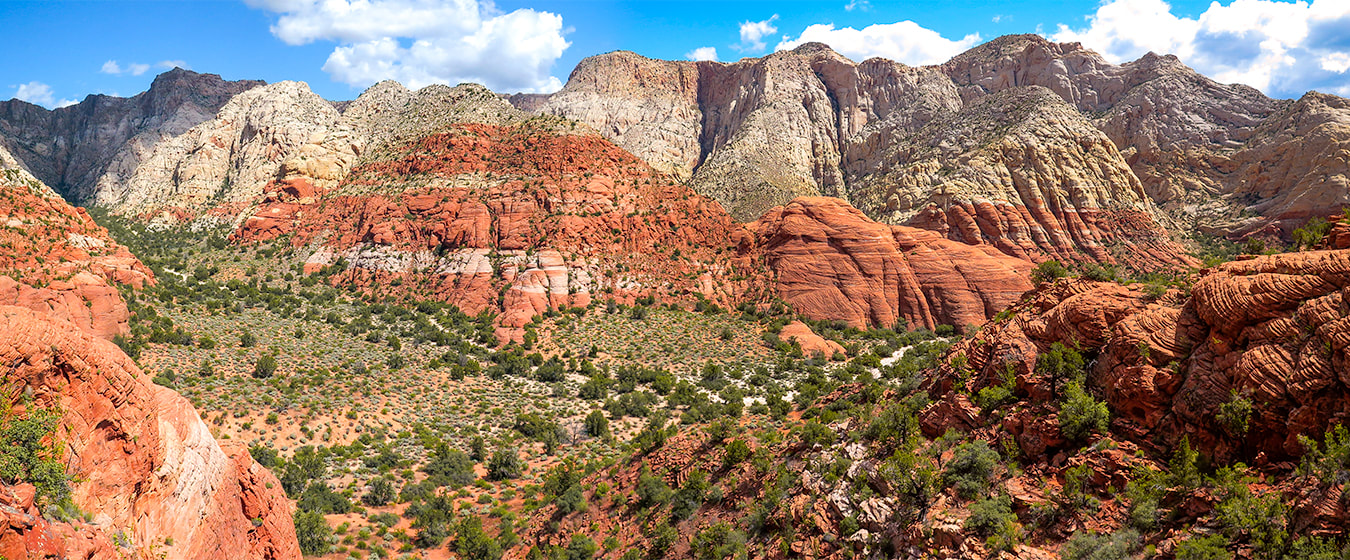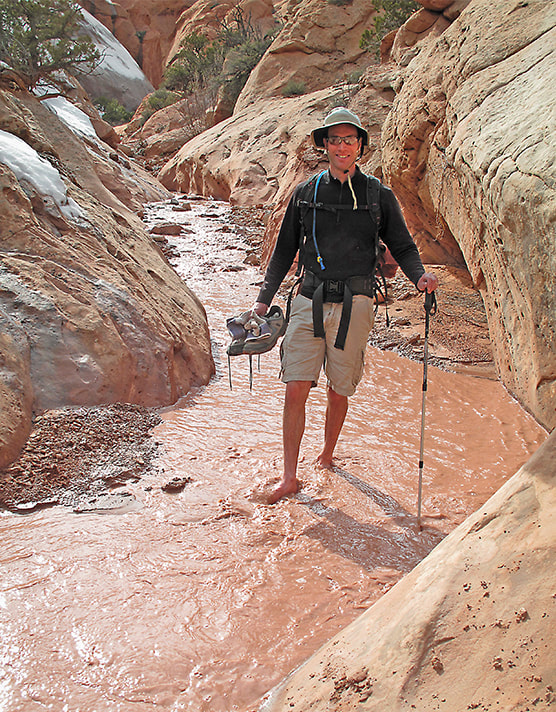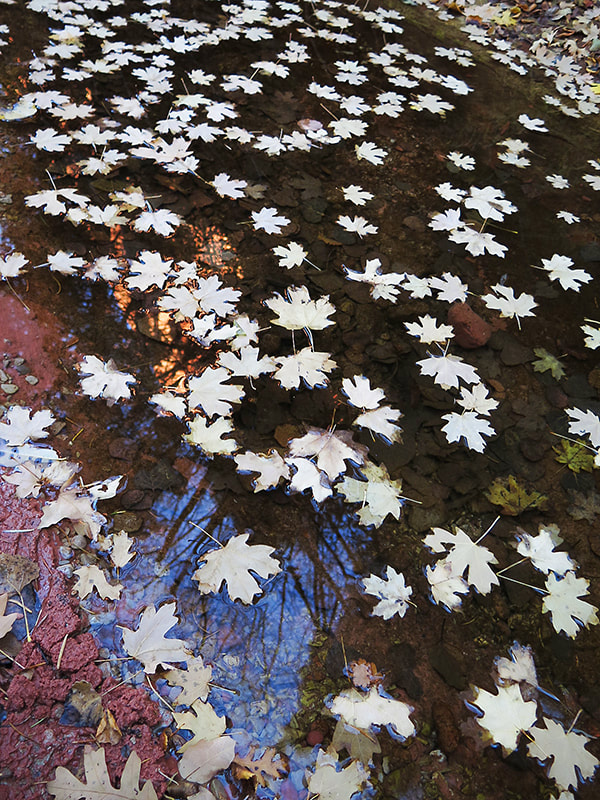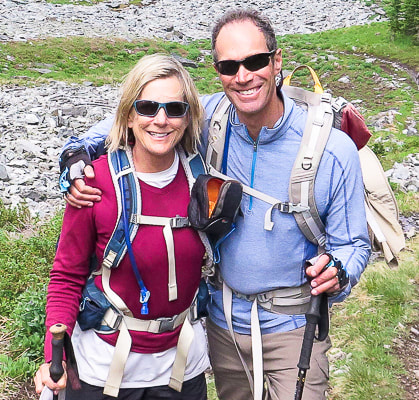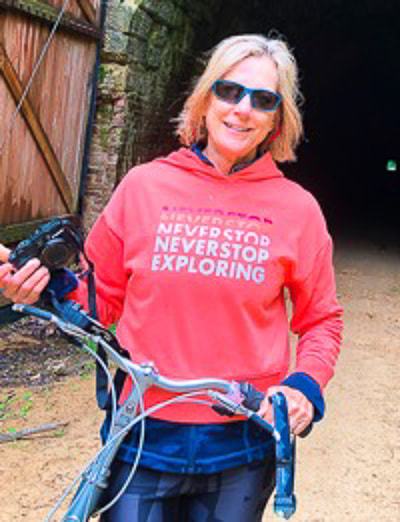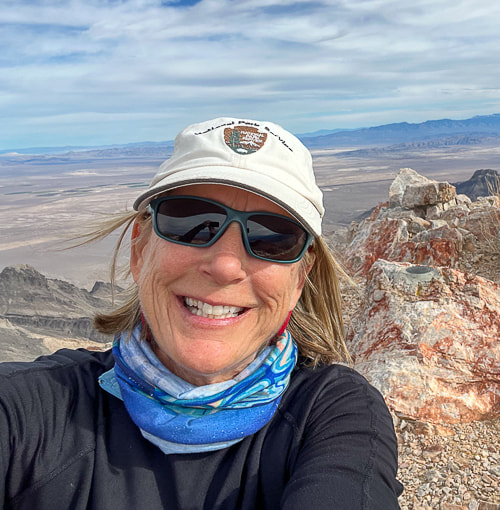|
Reflections on Southern Utah's warm colors and a remedy for the Boise winter blues. Related Posts: Buckskin Gulch, the longest slot canyon in the southwest Paria Canyon - Vermilion Cliffs National Monument Buckskin Gulch Hiking West Rim Trail after a March snowstorm - looking into Zion Canyon at the Virgin River. In color meaning and symbolism, red is a physical stimulant. It triggers our adrenal gland, causing us to have energy and take action. It makes us more sensitive to our environment and invigorates us. Orange is the color of warmth, vitality, creativity, and it too increases our activity levels and gives us a sharper awareness of our surroundings. It's no wonder Fred and I escape the low-energy and dispassionate grays and browns of wintertime Boise to reinvigorate in Utah's red rock country. Somewhere between Paragonah and Parowan, on our drive southward to St. George and the Zion area, the landscape transforms from hints of pink to to the blazing oranges and reds of Red Mountain Wilderness. Or we travel to Vermilion Cliffs and Grand Staircase-Escalante areas for adventures in chocolate-brown, pink and maroon sandstone canyons. Like bees to flowers, we have found our way to Southern Utah many times over the past 20 years and there's so much yet to see. If you had to identify one element responsible for the warm colors of Southern Utah, an element that jolts us out of our winter blues and spurs us onto adventure, it would be .....iron. The Navajo Sandstone exposed in Zion National Park shows off the many colors that iron creates. When iron is exposed to oxygen, it produces varying colors; and these colors depend on what form of iron oxide is present. The accumulated sand grains get coated with iron oxide. Hematite is the iron oxide responsible for the saturated reds. Limonite is responsible for the yellows. It's believed that white sandstone formerly had color but then was "bleached" by ground waters that dissolved iron oxides from the upper heights of the Navajo Sandstone. There's a reason Zion gets over 4 million visitors a year: it has the thickest exposure of the colorful and cross-bedded ancient sand dunes that make up the Navajo Sandstone (2,200 feet). Zion Wilderness Zion Canyon from cliffs of Mt. Kinesava Bridge Mountain mid-horizon, East Temple to the left of it. Red Sands Trail - Snow Canyon State Park
Zion's West Rim Trail after a March snowstorm Snow Canyon State Park Cross bedding of ancient sand dune - Zion National Park Overlooking Zion Canyon and Virgin River from Cable Mountain. West Rim Trail - Zion National Park Emerald Pools - Zion National Park Hidden Pinyon Trail - Snow Canyon State Park Peekaboo Canyon near Kanab. Chiseled steps from ancient ones in Peekaboo Canyon near Kanab. "The Wave" Coyote Buttes in Paria Canyon-Vermilion Cliffs Wilderness Only 20 people per day are allowed; we were able to get permits twice by getting to the Kanab office early in the morning during Christmas Holidays before it became so popular! Zion's East Rim Trail Portions of this trail now closed due to large rockfall. The Great Gallery and Archaic Culture Sometime around 2,000 B.C. until 500 A.D., scientists say, nomadic hunter-gatherers from the Desert Archaic culture used red ochre paint to make pictographs of human-like figures onto the sandstone walls of what is now Horseshoe Canyon. It's a long drive for a short hike, but distances don't matter when standing in front of this incredible wall. As we stared at these red, almost eerie-looking figures, a park ranger quietly came up the path to sit on a nearby fallen cottonwood trunk, as he had almost every day to prevent vandalism. More recently, geologists date the rock art panel between 0 A.D. to 1,100 A.D. It has been interpreted as a sacred place for Archaic hunters. The significant discovery of an old leather bag eroding from sand by visitors in 2005 helped archaeologists piece together a scenario of the Archaic hunter who placed it near the Great Gallery wall. The bag contained three small leather pouches, a water-rounded stone, and marsh-elder seeds. Two of the pouches were stained red by hematite, one of which held chert to make arrowheads; the other probably held pieces of this ore. The seeds were an emergency food cache. The flintknapper/hunter had collected more chert flakes than he needed and was heading southwest to his home. This was an excellent place for him to stash extra hunting tools and food in case of emergency, and an easy landmark to remember and describe to kin. He was walking through a natural travel corridor. The "Holy Ghost" and the Great Gallery in Horseshoe Canyon Canyonlands National Park in southeastern Utah Newspaper Rock - San Juan County, Utah One of the largest collections of petroglyphs in the country. Fremont, Ute, and Anasazi Native Americans contributed to this panel. Designs were created by pecking through the desert varnish to the lighter rock beneath. Santa Clara River Reserve near St. George. Mesa Arch at Sunrise - Canyonlands National Park The best spot to photograph this arch was already taken by a photographer and his tripod at 5:30 a.m. Still more than enough places for photographs! Death Hollow in Grand Staircase/Escalante' National Monument (these are the actual colors - not saturated with Photoshop). One of the most colorful canyons I have been in. Buckskin Gulch Snow Canyon State Park at sunrise Writing About Red Rock Country In her book "Red: Passion and Patience in the Desert," Terry Tempest Williams effectively conveys how it feels to be in the red rock country. To read her words is to feel the warm sun, the rough sandstone, and the enormous space in the red rock canyons and mesas. She reflects on its physical and spiritual aspects. She grew up in Utah and is also an educator and environmental activist. The more I visit this beautiful place, the more I can relate to her writings. She reminds us to slow down and really "see" and contemplate the land. If we do that, then we can "hear the voice of our conscience. If we listen to that voice, it asks us to be conscious. And if we become conscious, we choose to live lives of consequence." Another quote from her book: "Time and space. In the desert there is space. Space is the twin sister of time. If we have open space then we have open time to breathe, to dream, to dare, to play, to pray to move freely, so freely, in a world our minds have forgotten but our bodies remember. Time and space. This partnership is holy. In these redrock canyons, time creates space--an arch, an eye, this blue eye of sky. We remember why we love the desert; it is our tactile response to light, to silence, and to stillness." Paria Canyon-Vermilion Cliffs Wilderness Area, Northern Arizona - "The Wave" in Coyote Buttes Petroglyph at confluence of Wire Pass and Buckskin Gulch Paria Canyon-Vermilion Cliffs Wilderness - Arizona Buckskin Gulch Paria Canyon-Vermilion Cliffs National Monument Palmer's Penstemon in Snow Canyon State Park, Utah. Snow Canyon State Park - St. George, Utah Fred on Upper Muley Twist Trail - Capitol Reef National Park Off of Burr Road, south of Boulder, Utah Great views of the Waterpocket Fold, hike through canyons and on top of mesa Walking through snowmelt from higher up on plateau, but the water wasn't too cold! Along Taylor Creek on the Double Arch Alcove Hike Zion National Park Kolob Canyons section Leaves were all rotating counter-clockwise in this small pond. References National Park Service. Analysis and Dating of the Great Gallery tool and Food Bag. Natural History Museum of Utah. Bold Figures, Blurred History: The Great Gallery in Horseshoe Canyon. Weaver, Lance. 2020. What Gives Utah's "Red Rock Country" its Color? Utah Geological Survey. Colors of the Navajo Sandstone. nps.gov. sensationalcolor.com. Color Symbolism and the Meaning of Red. Navajo Sandstone. Utah Geology.com.
4 Comments
|
Categories
All
About this blogExploration documentaries – "explorumentaries" list trip stats and highlights of each hike or bike ride, often with some interesting history or geology. Years ago, I wrote these for friends and family to let them know what my husband, Fred and I were up to on weekends, and also to showcase the incredible land of the west.
To Subscribe to Explorumentary adventure blog and receive new posts by email:Happy Summer!
About the Author
|
